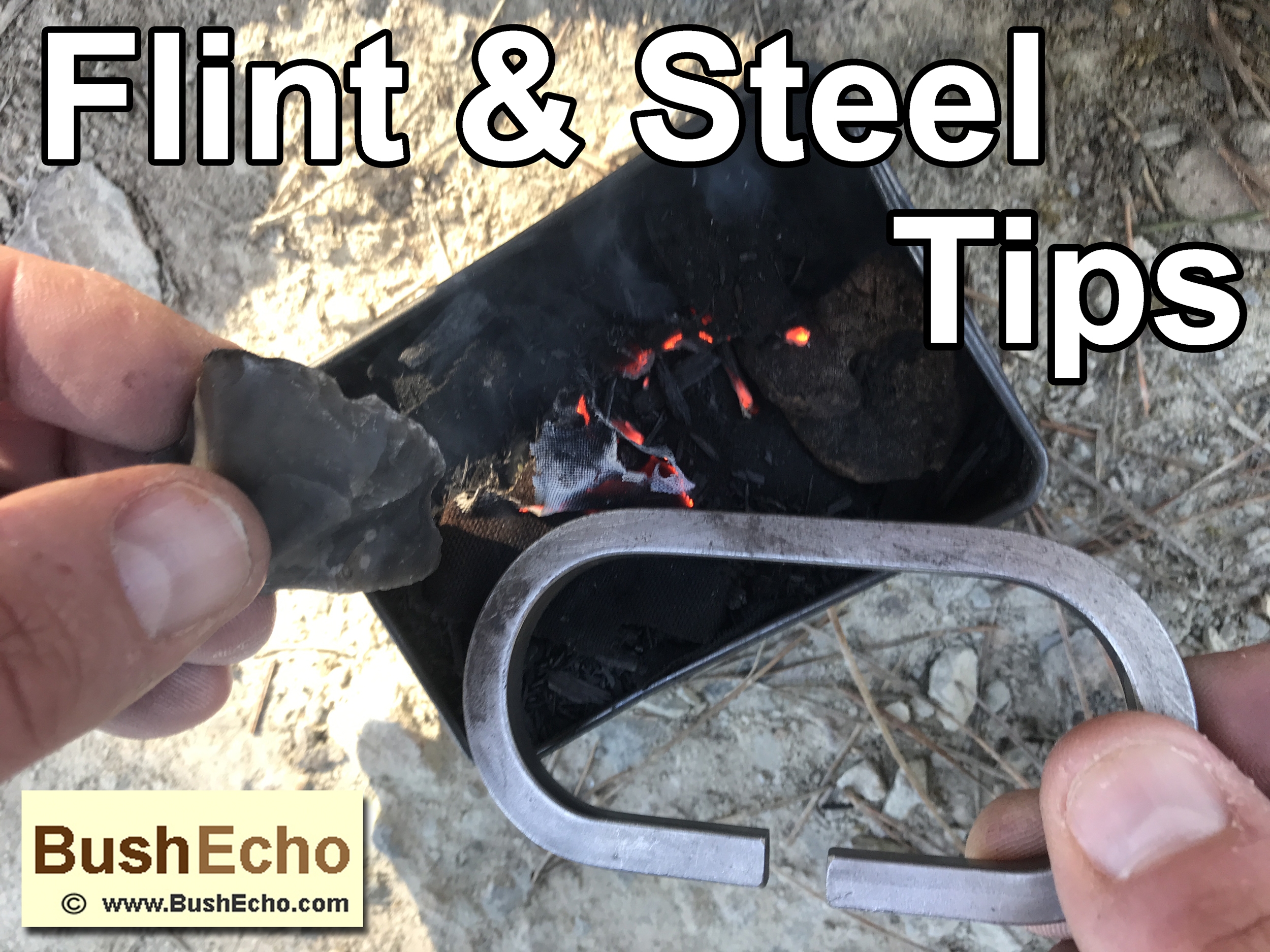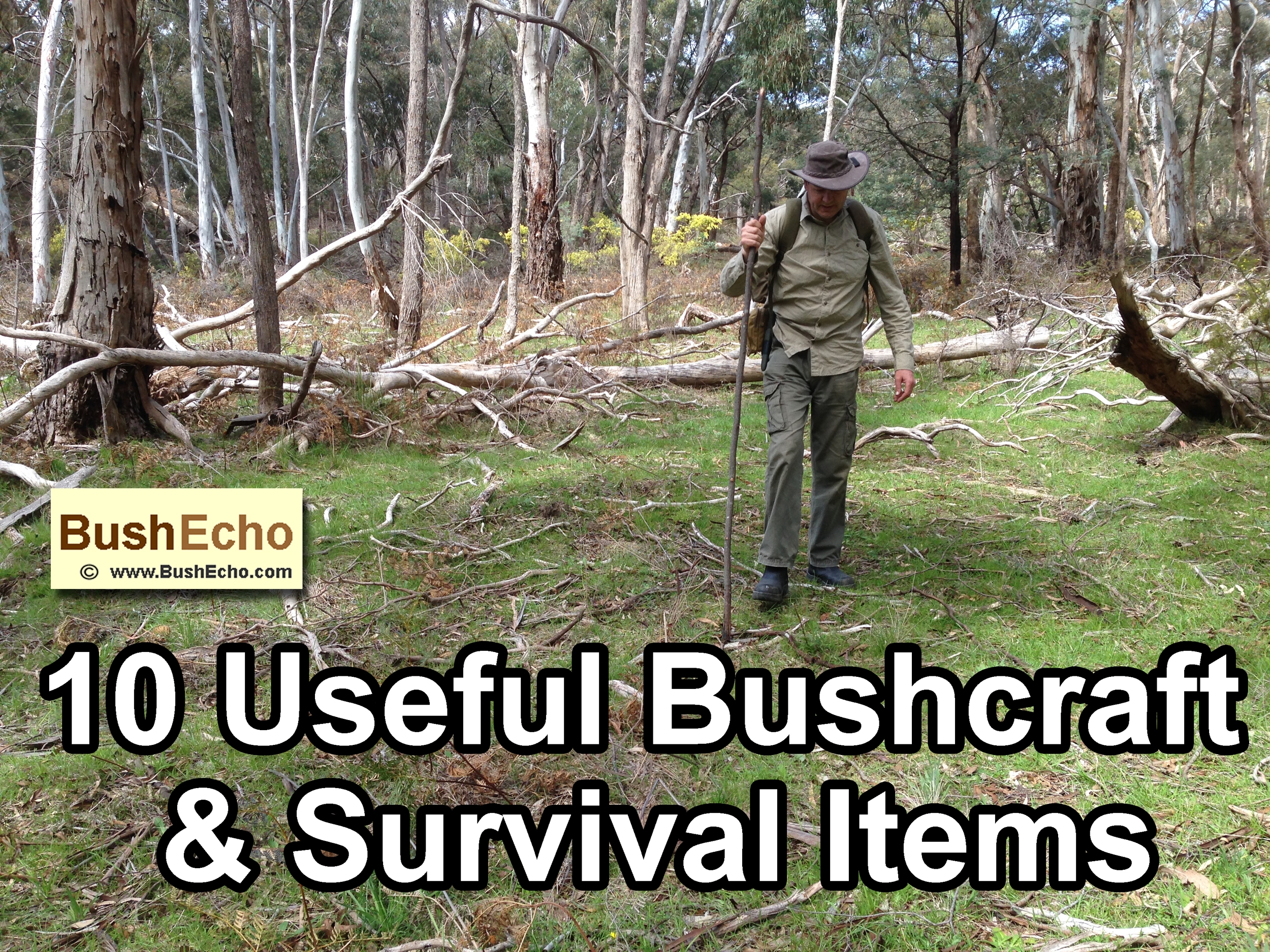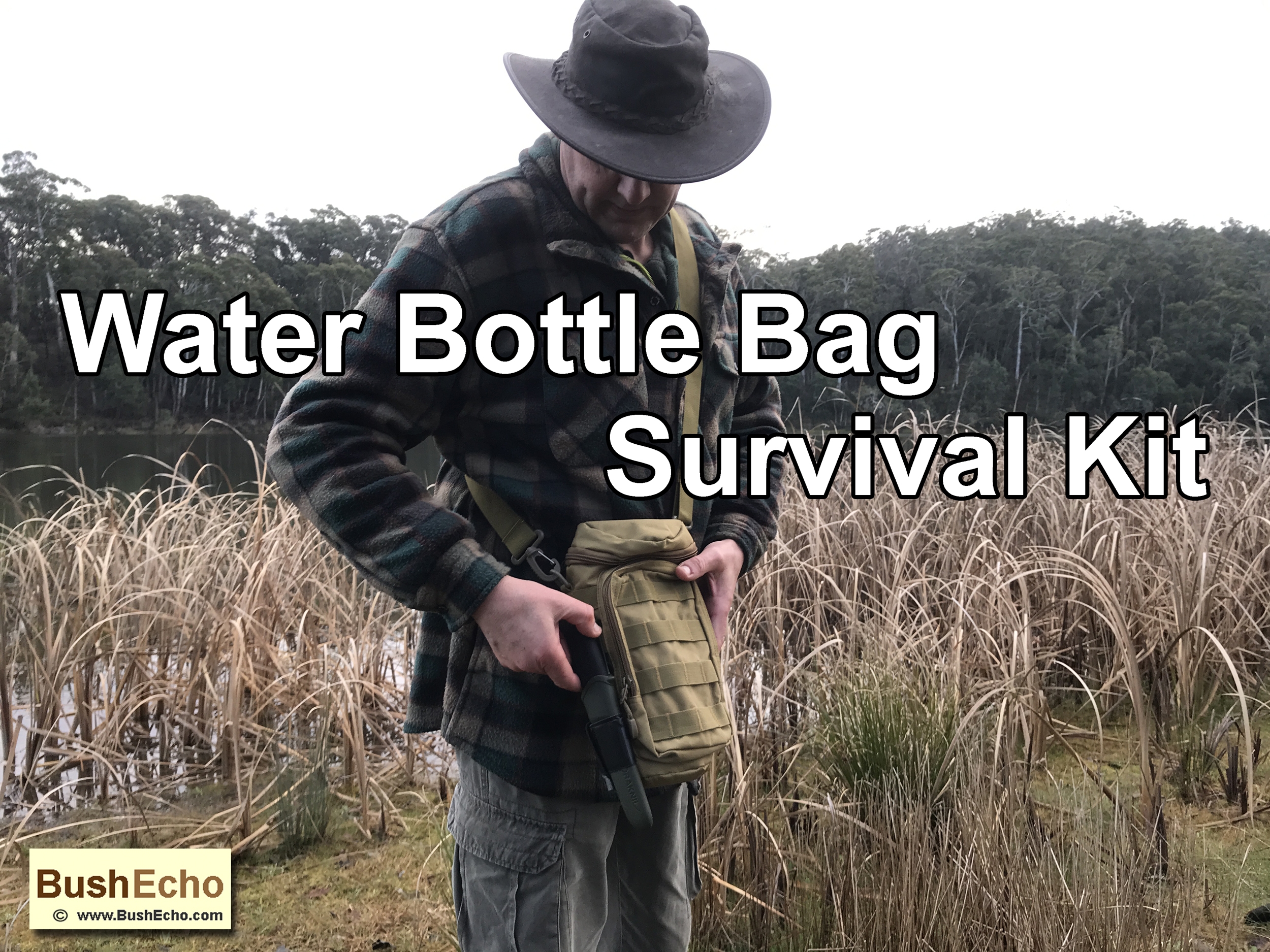The fisherman’s knot is used to connect two lines together. It can be tied quickly and also be used to make a loop between the two lines. The knot consists of basically tying two overhand knots.
Below are two versions of how to tie the fisherman’s knot. The first one has minimal steps, the second one has more detailed instructions on how to tie the knot.
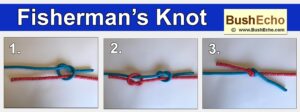
How to tie a fisherman’s knot. (Less detail.)
1. Place the two lines parallel to each other. Place the top blue line over the red bottom line and make an overhand knot. 2. Place the bottom red line over the top blue line and make another overhand knot. 3. Dress the knot and tighten.
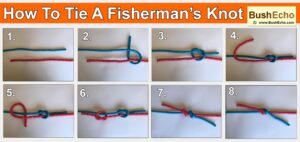
How to tie a fisherman’s knot in detail.
1. Place the two lines parallel to each other. With the working ends opposite. 2. Place the top blue line over the top and around the bottom line. Forming a loop. 3. Insert the working end of the blue line through the loop. Making an overhand knot. 4. Place the bottom red line over the top blue line. 5. Come over behind the blue line and create a loop with the red line. 6. Insert the working end of the red line through the red loop. Making another overhand knot. 7. Dress the knot. 8. Tighten and check the knot is correct.
Tips for tying the fisherman’s knot.
1. It doesn’t matter if you start the knot by placing the working end over or under the other rope, as long as the second knot is started over or under the same way.
2. The end knot, the working ends, or tag ends should be pointing in opposite direction, parallel to each over.
3. When you go to tie the overhand knot, ensure the working end goes through the loop and comes out in the direction of the other lines standing end.
4. To ensure the knot is tied correctly, the back of the knot should have two strands closely parallel together. As per below photograph of the green indicator lines.
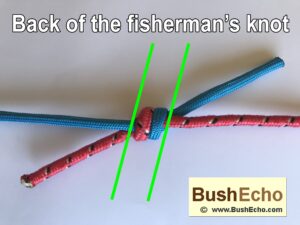
For load bearing, the double fisherman’s knot is a better option.
The fisherman’s knot might also be known as the English knot, waterman’s knot and angler’s knot.
Affiliate Links – This article may contain some affiliate product and Amazon affiliate links. This comes at no additional cost to the reader, and helps to support the website. Thank you.
Copyright © by BushEcho. Content on this site cannot be copied and is protected by copyright law. Please contact the author/s for permission.
Disclaimer – This information is for educational purposes only. The author/s and website disclaim liability for any damage, mishap, or injury that may occur from engaging in any activities or ideas from this site.

